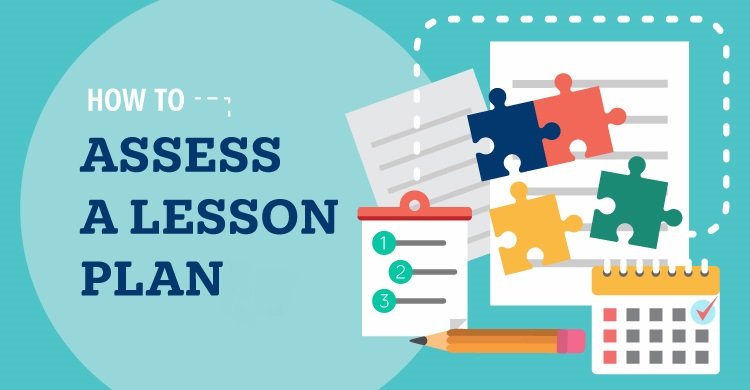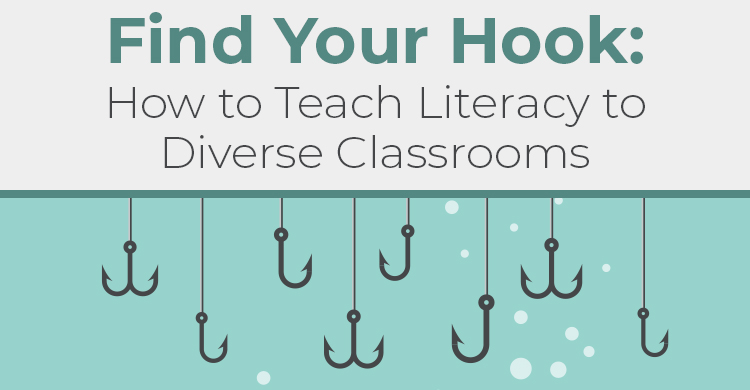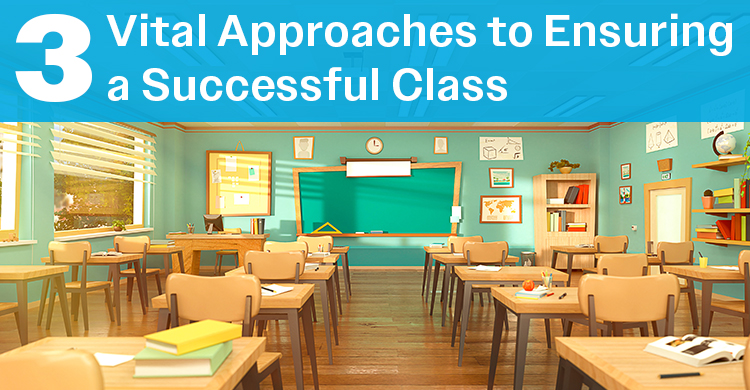Based on Instructional Planning for Effective Teaching
All teachers engage in certain levels of strategic and tactical planning. These terms may seem to belong to the business field, but they are indispensable for effective instruction. If strategic planning involves instructional planning for broader long-term learning goals, for instance semester-end or year-end goals, then tactical planning involves using specific resources to achieve short-term subgoals, often in the form of lesson plans.
Lesson plans—a form of tactical, or short term, planning—are basic blocks of instruction that stack up toward bigger learning goals. Dividing the learning process into smaller cohesive lessons makes teaching and learning more efficient. Sequencing and grouping learning goals into lessons help teachers pace the instruction over the year, and also make progress monitoring and instructional adjustment more manageable.
Creating a lesson plan helps teachers visualize how a lesson might unfold and helps to anticipate what might or might not happen. In this short article, we will specifically look at the qualities that make a lesson plan effective. We hope the indicators discussed below will help teachers consider how to develop comprehensive and well thought-out lesson plans, such as ones you might find in the Solution Tree resource Instructional Planning for Effective Teaching.
Lesson Planning Quality 1: Clear Learning Objectives
Learning objectives are statements that describe what students are expected to achieve as a result of instruction. If students don’t know what they should be able to do at the end of class, then it would be difficult for them to get there.
Learning objectives address this problem by explicitly defining the expected learning and making the learning process goal directed. And, they should focus on student performance. This means they focus exclusively on what students should know and do at the end of the lesson, and not just on behaviors of the teacher or the procedure of learning.
They also should have student-friendly and developmentally appropriate language, as they have to be clearly communicated to and understood by the students.
We could develop student-centered and outcome-based learning objectives by thinking from the students’ perspective, for instance, by using sentence stems such as “By the end of the lesson I will…”
Following the stem would be specific and concrete action verbs—such as match, identify, describe, compare, explain, apply, and infer—to state the performance students are expected to demonstrate after learning. The learning objective of any lesson could be a combination of factual and deep learning, and/or a combination of conceptual ideas and procedural skills.
Some guiding questions for creating learning objectives in a lesson plan might include:
- Are the learning objectives appropriately challenging, and do they align with the curriculum standards?
- Are learning objectives able to cover meaningful content, skills, and/or dispositions? Will students be able to answer the question of “this is important because…?”
- What are the essential questions to be answered in the lesson?
- What are the most important concepts or skills to be learned?
- Are the learning objectives clearly stated in terms of student learning rather than classroom activity or teacher behaviors?
- Will the students understand the learning objectives and will they be able to articulate them in their own words?
Lesson Planning Quality 2: Building on Prior Knowledge
Students, as with all of us, learn and remember new information best when it is linked to prior knowledge. A part of teaching is about supporting and scaffolding learning to integrate new information with prior learning. It is important to know what prior knowledge students have, as well as their readiness for learning new content.
Thus, pre-assessment can provide valuable diagnostic information about the gap between students’ current knowledge and the intended learning. Teachers can administer pre-assessment to establish a baseline for each student. Strategies to determine students’ prerequisite knowledge include questions, short quizzes, “KWLH” (K – What do I already know?; W – What do I want to find out?; L – What have I learned?; and H – How can I learn more?), think-pair-share, and entry tickets.
Some guiding questions to anchor the new learning to prior learning include:
- What are students’ preconceptions and misconceptions about the subject matter?
- How can the new learning hang on students’ prior knowledge and real-world experience?
- Are there any existing pre-assessment data available to diagnose what students already know/do about the objectives?
- If no existing data is available, how can easy and effective pre-assessments be created that can be analyzed quickly, without taking too much instructional time?
- How could students’ abilities, strengths, and weaknesses, as well as interests, be incorporated into the lesson?
Lesson Planning Quality 3: An Engaging Opening Activity
Without careful planning, it is very easy to spend more than 10 minutes at the beginning of a class taking attendance, distributing or collecting homework, and making announcements and without engaging in meaningful teaching and learning at all. An intriguing and engaging opening activity (e.g., hook, multimedia presentation, anticipatory set, focusing event, or advance organizer) can pique students’ curiosity and motivate them to engage in the new learning right from the beginning of class.
An effective opening activity should activate prior learning and have relevance to students’ real-life experience. Students are more engaged when they see learning has personal value versus being abstract and not relevant to real life.
Some guiding questions are:
- How can you activate prior knowledge and relate it to the current lesson?
- How can you help students see a meaningful need to learn the new information?
- What are some thought-provoking questions to trigger student attention and interest?
- What will show students the new knowledge and skills have connections to their personal career or life goals or even how the knowledge and goals fit with their interests today?
- Are there specific examples linking the present learning to real world problems?
Lesson Planning Quality 4: Effective Instructional Strategies/Learning Activities
The major chunk of a lesson plan should be the content-specific instructional strategies or learning activities that will be used to present and impart content in a way that students can comprehend. A one-size-fits-all teaching approach is a disservice to all students. Effective teachers incorporate differentiation into their instructional design and use a blend of whole-group, small-group, and individualized instruction.
We tend to teach in the approach in which we learn best ourselves; however, students learn in diverse ways, so we have to include a variety of learning approaches to meet students’ needs. There are several subcomponents to consider when selecting and organizing the instructional strategies/learning activities.
Sequence and Organization of Instruction
- What are the optimal instruction strategies/learning activities for accomplishing the learning objectives, given the resources (e.g., time, materials, technology) available?
- Will a variety of instructional strategies be used to increase student engagement and maximize learning? For example, will there be a balance of lecturing, problem solving, questioning, and practicing?
- How should learning materials be selected and/or adapted, considering students’ age, prior knowledge, and interest?
- What procedures will students need to follow to complete the activities? For instance, if activities require students to work together, how will you form groups? How will you encourage collaborative and productive work in groups?
- How much time will be allocated for different parts of the lesson?
- What are the potential difficulties that you anticipate the students are likely to encounter?
- What presentation alternatives will you use if students have trouble with certain concepts or skills (e.g., peer explanations, media, textbooks)?
Accommodating Learning Differences
- What learning data is available to inform you about individual students’ readiness, interest, and learning preferences?
- How can you differentiate instruction within this lesson so that all students will have good opportunities to learn and master the objectives (e.g., through grouping, different complexities in content, or different activities)?
- How can you ensure students who fall behind receive remedial instruction and advanced learners get the enrichment they deserve?
Flexibility
- Does the lesson plan allow for flexibility and adjustment when needed?
- What will you do if time is too short or too long?
- What will students do if they finish early?
- Does the lesson plan have room for teachers to be flexible and take advantage of the opportunities that emerge unexpectedly within the classroom?
Lesson Planning Quality 5: Sticking the Closure
If the closure of a lesson is left out in planning, an important teachable moment is overlooked. An effective closure activity summarizes, clarifies, and reinforces what has been learned and helps makes the learning stick in students’ long-term memory.
At the end of the lesson, students should walk away with a desire and compelling need to retain and use what was learned. Examples of wrap-up activities might include having students tell an “a-ha” moment they had in the lesson, or having them write a postcard to their parents explaining what they learned in the lesson.
Some guiding questions are:
- How can the closure revisit the learning objectives to reinforce and review key concepts, ideas, or principles?
- How can you include an active review where students self-assess their understanding or wonder what they would like to know more about?
- How can you give students opportunities to draw conclusions, rather than having teachers direct the summarizing?
- Is it possible to give an interesting or unexpected prompt at the end to capture students’ interest? Or can you discuss in what situations students might use the new information?
Lesson Planning Quality 6: Quality Assessments
A lesson plan is not complete without an assessment component. Just as the classroom activities should be aligned with learning objectives, the assessment should alsos be congruent. We all know how frustrating it would be to get assessed on something that is never taught or learned in class. Some guiding questions to consider for creating and using quality assessments are:
- During the lesson, how will you know if students are making progress toward the objectives (e.g., observation, thumbs-up & thumbs-down, questioning)?
- How can you determine whether the lesson objectives have been accomplished at the end of the lesson?
- What kind of product, if any, will you expect from students at the end of the lesson?
- How will you evaluate students’ performance and provide feedback? Will rubrics and scoring be used?
- How will the assessment results be communicated to the students?
- Perhaps most importantly, what will you do with the assessment results for building your next lesson?
Indeed, instructional planning matters. To ensure proper coverage of the breadth, depth, and sequence of the intended learning, instruction must be preceded with careful planning and preparation. Quality planning takes time and work, but it is well worth the effort!
Dr. Xianxuan Xu and Dr. James H. Stronge are the authors of Instructional Planning for Effective Teaching, a Solution Tree title.






